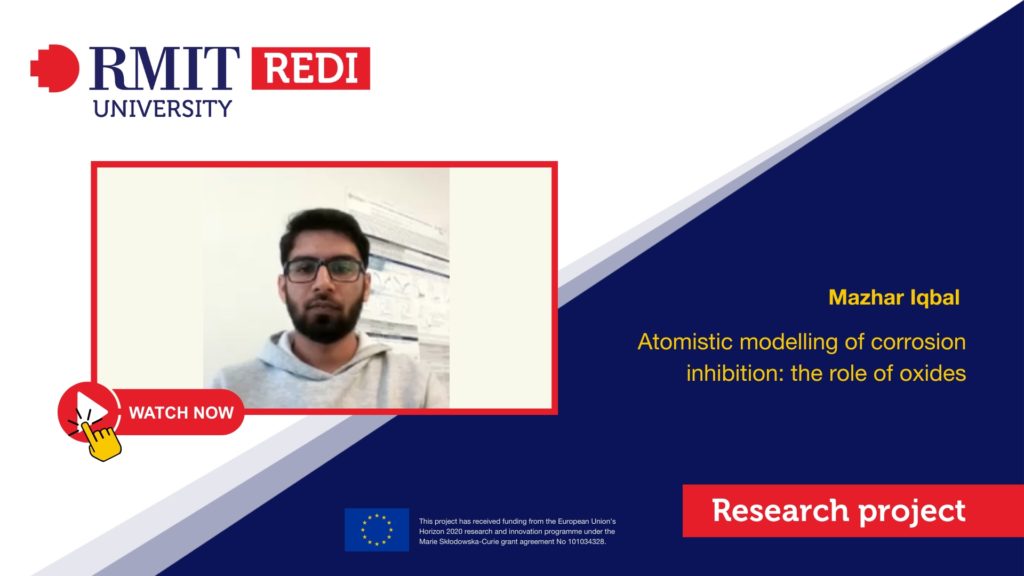Corrosion is the deterioration of a material (usually a metal) that results from a reaction between the metal and its environment. It is associated with various yearly safety, economic, social, and environmental losses. The rate of corrosion can be reduced by employing small organic molecules as corrosion inhibitors. These inhibitors adsorb onto the metal surface either by physisorption, chemisorption, or both processes, forming an effective film barrier that protects the metal surface from corrosive media attacks. For instance, 2-mercaptobenzimidazole (MBI) is an efficient corrosion inhibitor for copper (Cu), a significant industrial material. Experimental approaches available to study the adsorption mechanism of MBI do not provide an in-depth understanding of metal-inhibitor interactions and are time-consuming and expensive. As an alternative, people have used density functional theory (DFT) based modelling approaches using clean Cu surfaces (found in acidic solutions) and oxidized Cu surfaces (found in alkaline solutions).
However, these modelling studies have not considered corrosive conditions (presence of aqueous solvent, electrolyte ions, and bias effect, and how these influence charge density distributions and inhibitor-surface interactions) necessary for corrosion inhibition studies. Therefore, the current modelling study aims to incorporate all the corrosive conditions stated above to evaluate the effects of electrodes’ potential and aqueous solvent containing electrolyte ions on interactions between MBI inhibitors and oxidized Cu surfaces. DFT, quantum mechanics/molecular mechanics (QM/MM), and non-equilibrium Green’s function (NEGF) approaches will be utilised to carry out this study. All calculations will be performed using the SIESTA code, specifically the TranSIESTA and QM/MM modules.
Watch a video about Mazhar’s project:
